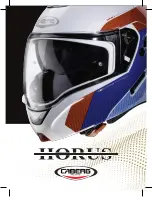
67
!"
#
$%
&'
()!$
The fuel used for internal-combustion engines
is:
-
highly inflammable and, in certain circum-
stances, may become explosive;
-
harmful by inhalation, if swallowed or in
contact with skin, with possible serious con-
sequences;;
- irritating to skin;
-
harmful to the soil and aquatic environment,
harmful to flora and fauna.
!"#$%#&'"()%)*
- contact with skin;
- inhalation of vapours;
- ingestion;
- release to the environment;
- exposure of the fuel to air.
Do
+,!
use your mouth to suck up, with a tube
or other means, fuel from the tank. The fuel va-
pours are dangerous.
Under
+,
circumstances put your face near the
fuel tank filler.
-./(01#/%2.%33(01#&0)#(0#45%#'(6(0(47#"2#2.%3#
'&8"./9*
- do not smoke;
-
do not use naked flames, sparks or any other
source of ignition or explosion;
- switch o
ff
the engine and the lights.
If swallowed do
+,!
induce vomiting but seek
medical advice immediately (first aid post),
indicating the cause and how the accident oc-
curred.
After contact with skin, wash the a
ff
ected part
immediately with soap and water, repeating the
operation until completely clean.
In case of contact with eyes or ears, rinse the
a
ff
ected parts immediately with plenty of water
and seek medical advice immediately (first aid
post), indicating the cause and how the accident
occurred.
After contact with clothes, remove contaminated
articles and wash immediately with plenty of
water and soap. Change the dirty clothes, which
must be washed as soon as possible.
Avoid fuel spilling or overflowing from the tank;
if it comes into contact with overheated engine
parts it could cause a fire.
If fuel is accidentally spilt, clean the a
ff
ected area
thoroughly, making sure that it is completely dry
before starting the engine.
The fuel must only be used as fuel for internal-
combustion engines and sold only by putting it
directly into the vehicle tank.
An increase in the temperature (also environ-
mental) causes the fuel to increase in volume.
There is an air gap between the “fill level” and
a completely full tank designed to allow the fuel
volume to increase without danger of it leaking
out. At the end of refuelling, always ensure that
the fuel tank cap is well closed.
:;;<#,=!#,>#?;@AB#,>#ABCD-?;+E
-CF<,F;#,>#!B;#>=;D#@!#@#F<;AC@D#G@F!;#
A,DD;A!C,+#<,C+!E
?;>=;DDC+H
For the type of fuel to be used, see page 81
(SPECIFICATIONS) under:
- FUEL.
Tank capacity (reserve included) and tank re-
serve: see page 81(SPECIFICATIONS) under
FUEL.
!"#/%2.%3*
Unscrew and remove the fuel tank filler cap (1).
Do not add additives or other substances to the
fuel. If a funnel or such is used, make sure that it
is perfectly clean.
>CDD#D;I;D
When refuelling, do not exceed the “fill level”.
“Fill level” means there is an air gap of 20-25
mm.
Complete refuelling and close the tank cap (1).
Make sure that the cap is perfectly closed.
Summary of Contents for 125 Series
Page 1: ...MANUALE D USO OWNER S MANUAL MANUEL D UTILIZATION...
Page 43: ......
Page 84: ...84...
Page 85: ...85 0123 4 0 4 5 0 67 8 9 9 2 7 A B CDE FA AG A HE...
Page 127: ...127...
Page 128: ...128 0 1 23 4 4 2 5 5 6 5 52 7 3 789 9 8 A BCD A 8 6 5 6 9 8 A ED...
















































